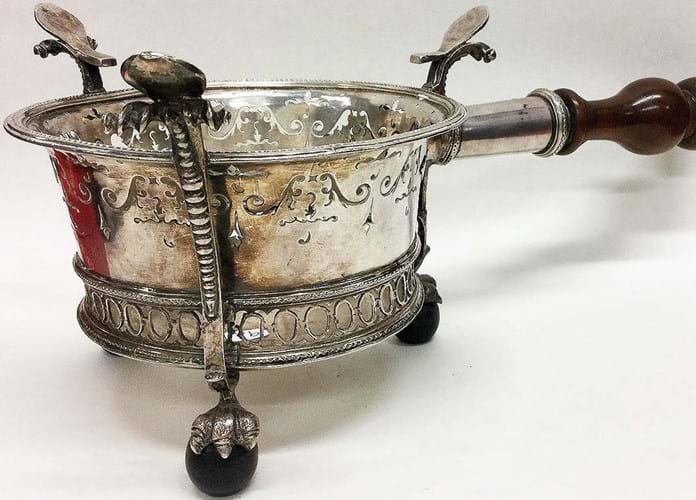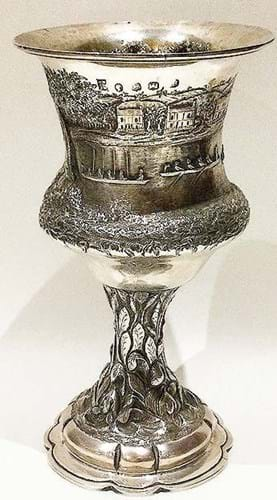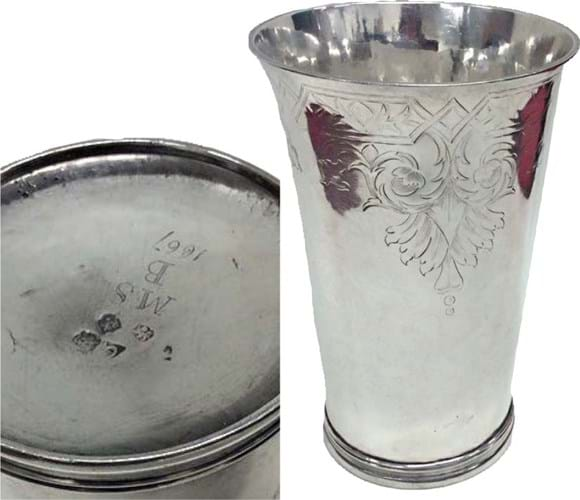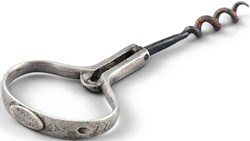Among the more unusual pieces in the specialist silver sale at Whittons (18% buyer’s premium) of Honiton on February 10 was a Charles II brazier.
Measuring 7½in (19cm) in diameter and weighing 23oz with a removable turned handle, it would have held charcoal embers to keep food warm at the table. A rare item with marks for London 1669, it was pitched at £800- 1200, but sold at £3200.
In a sale largely driven by West Country collectors, the 524 lots were topped by a flamboyant 135oz Paul Storr tureen and cover.
Marked for London 1812, it had a lift-off reeded cover, crested armorial sides and cast lion-mask feet. Estimated at £10,000-15,000, it took £17,000, a rare bidding victory for the specialist silver trade.
A pair of 10in (25cm) diameter, crested serving dishes by Elizabeth Godfrey, London 1743, sold at £3000 – the same price achieved by another noted member of the silversmith sisterhood.
Snuff box
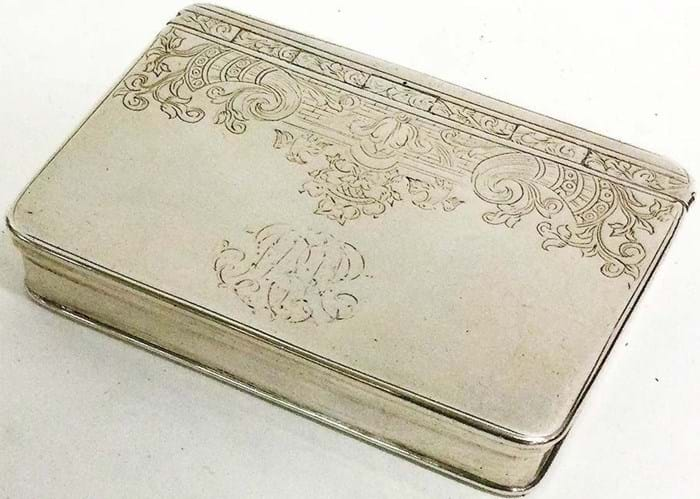
A snuff box from c.1700 with the maker’s mark for Elizabeth Hazelwood of Norwich – £3000 at Whittons.
This engraved snuff box was struck twice with the maker’s mark for Elizabeth Hazelwood of Norwich and, although undated, was probably made c.1700.
Once the second city in the kingdom, Norwich had its own silver assay office during three periods between 1565 and 1702. The city was much admired for the quality of its output – some of it on par with that produced in London and York – but today perhaps only 200 pieces of Norwich secular silver survive.
This box from the end of the Norwich era was estimated at £250-350 but sold at £3000.
Band of Bristol brothers
Of local interest was a 7in (17cm) Victorian chased silver goblet with marks for Exeter and RW, JW & JW for the Bristol family of silversmiths Robert, Josiah and James Williams. Worked to the stem in relief with creeping vines, the bowl carried a repousse rowing scene and a shield reading Bath Regatta 1849 City Cup.
Local history websites suggest the Bath Regatta of June 1849 was the first held at Saltford – a mile-long stretch of the river that allowed for a straight run, space for spectators and a nearby railway station.
It was followed by a celebratory evening meal at the Castle and Ball Hotel described in local newspaper The Bath Chronicle.
“The tables were admirably furnished with a large variety of the best of viands, served in most elegant taste… On the removal of the cloth, the prizes were placed on the table for the inspection of the company. Their elegance and beautiful workmanship called forth the warmest expressions of admiration.”
Some idea of that ‘beautiful workmanship’ was provided by this goblet that sold for a double-estimate £1550.
Silver beaker
With plenty of merchandise coming through the doors, Whittons held a follow-up sale of a similar size on March 10-11. A Charles II tapering silver beaker decorated with flowers and leaves led proceedings at £5200 (estimate £4000-5000).
With marks for RK, London and the Restoration year of 1666, it was also inscribed to the base with the ownership initials MS over B and the date 1667. Larger than many examples at 7in (17cm), it was also in nice condition.



